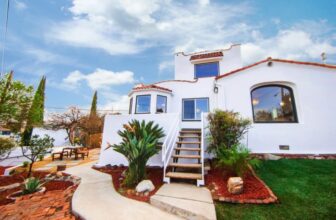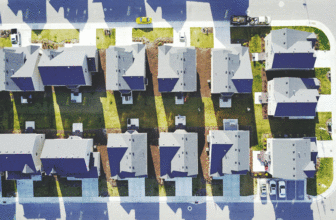
Accessory Dwelling Units (ADUs) are becoming increasingly popular as a way for homeowners to add additional living space to their properties, provide rental income, and accommodate aging family members or guests. However, building an ADU requires compliance with a set of building codes that can be complex and confusing. The purpose of ADU building codes is to ensure the safety, livability, and energy efficiency of the unit, and to protect the surrounding neighborhood and the environment. In this blog post, we will provide an introduction to ADU building codes and explain why they are important.
Overview of ADU building codes
A. National and local codes:
ADU building codes are established by national and local governments to regulate the construction of accessory dwelling units. National building codes, such as the International Residential Code (IRC), provide a minimum standard for safety and quality, while local building codes may have additional requirements based on the specific climate, zoning, and other conditions in the area. It is important to be familiar with both national and local building codes when planning to build an ADU.
B. Key components of ADU building codes:
The key components of ADU building codes include structural requirements, electrical and plumbing systems, fire and life safety systems, energy efficiency standards, and accessibility requirements. These codes determine the minimum requirements for the design, construction, and inspection of an ADU, and cover everything from the size of the unit to the materials used in construction.
C. Differences between ADU building codes and traditional building codes:
While there are similarities between ADU building codes and traditional building codes, there are also some important differences. For example,
ADU building code requirements
A. Structural requirements:
The structural requirements of ADU building codes specify the minimum standards for the design, construction, and stability of the unit. This includes requirements for the foundation, walls, roof, and other structural components. The codes also dictate the minimum size and height of the unit, as well as the maximum number of stories.
B. Electrical and plumbing requirements:
ADU building codes outline the minimum requirements for electrical and plumbing systems in the unit. This includes standards for the electrical wiring, lighting, and appliances, as well as requirements for the plumbing system, including the water supply and drainage systems.
C. Fire and safety requirements:
Fire and safety requirements are a critical component of ADU building codes. The codes outline the minimum standards for fire suppression systems, such as smoke detectors and fire sprinklers, as well as the use of fire-resistant materials in construction.
D. Energy efficiency requirements:
In an effort to promote energy efficiency and reduce energy costs, ADU building codes typically include requirements for energy-efficient materials and systems. This can include insulation requirements, energy-efficient windows and doors, and the use of low-flow plumbing fixtures. These requirements are designed to improve the energy efficiency of the unit, reduce its carbon footprint, and save homeowners money on their utility bills.
Best practices for complying with ADU building codes
A. Hiring a qualified contractor:
Hiring a qualified contractor who is familiar with ADU building codes is crucial to ensuring that your project complies with all relevant regulations. A qualified contractor will have the necessary knowledge, experience, and expertise to ensure that your ADU is built to the required standards.
B. Conducting thorough research and planning:
Before beginning construction on an ADU, it is important to conduct thorough research and planning to ensure that the unit will meet all relevant building codes. This includes researching both national and local building codes, as well as any specific requirements for your area.
C. Obtaining necessary permits and inspections:
In order to ensure that your ADU complies with all relevant building codes, you will need to obtain the necessary permits and inspections. This typically involves submitting plans and specifications to your local building department, and undergoing several inspections throughout the construction process.
D. Staying up-to-date with changes to building codes:
Building codes are subject to change over time, so it is important to stay up-to-date with any changes that may impact your ADU. This includes regularly checking for updates to both national and local building codes, and consulting with a qualified contractor or building inspector to ensure that your unit continues to meet all relevant regulations.
Common challenges and solutions
A. Understanding complex building codes:
One of the biggest challenges in building an ADU is understanding the complex building codes that apply to these units. Many homeowners find the regulations and requirements confusing and difficult to navigate. A solution to this challenge is to hire a qualified contractor or building consultant who is familiar with the codes or to conduct thorough research and consult with local building departments.
B. Dealing with zoning and land use restrictions:
Another common challenge in building an ADU is navigating the zoning and land use restrictions that apply in your area. These restrictions can limit the size, location, and use of the unit, and may impact your ability to obtain necessary permits and approvals. A solution to this challenge is to research the zoning and land use regulations for your area and to consult with local planning departments for guidance.
C. Navigating the permit and inspection process:
The permit and inspection process can be complex and time-consuming and is often a challenge for homeowners building an ADU. A solution to this challenge is to plan ahead and allow enough time for the permitting and inspection process, and to work closely with your local building department to ensure that you have all the necessary approvals and inspections.
D. Finding cost-effective solutions to meet building code requirements:
Finally, one of the biggest challenges in building an ADU is finding cost-effective solutions to meet the building code requirements. This can include meeting energy efficiency standards, complying with accessibility requirements, and using materials that meet fire and safety regulations. A solution to this challenge is to work closely with your contractor to identify cost-effective materials and systems that will meet the building code requirements and to consider alternative construction methods that may be more cost-effective.
FAQs on ADU building codes
What are ADU building codes?
ADU building codes are regulations that govern the design, construction, and use of accessory dwelling units. These codes specify the minimum standards for safety, energy efficiency, and accessibility, and are designed to ensure that ADUs are safe, livable, and meet the needs of their residents.
What is included in ADU building codes?
ADU building codes typically include requirements for the structure of the unit, electrical and plumbing systems, fire and safety systems, and energy efficiency. The codes may also include accessibility requirements, such as those for people with disabilities.
How do I ensure that my ADU complies with building codes?
To ensure that your ADU complies with building codes, you should research both national and local codes, hire a qualified contractor who is familiar with the codes, obtain necessary permits and inspections, and stay up-to-date with any changes to the codes.
What happens if my ADU doesn’t comply with building codes?
If your ADU doesn’t comply with building codes, you may be required to make modifications to the unit to bring it into compliance. Failure to comply with building codes can also result in fines and legal penalties.
What are the costs associated with building an ADU that complies with building codes?
The costs of building an ADU that complies with building codes will vary depending on the size and complexity of the unit, as well as the materials and systems used. Factors such as zoning and land use restrictions, accessibility requirements, and energy efficiency standards can also impact the cost of the project.
What are the benefits of building an ADU that complies with building codes?
Building an ADU that complies with building codes has several benefits, including increased safety, improved energy efficiency, and increased accessibility. Compliance with building codes can also help to protect your investment and ensure that your unit meets the needs of its residents.
Conclusion
In this blog post, we discussed the importance of ADU building codes and the key components of these codes. We reviewed the requirements for electrical, plumbing, fire and safety, and energy efficiency, and offered best practices for complying with these codes. We also addressed common challenges and solutions for homeowners building an ADU.
Building an ADU is a significant investment, and it is important to ensure that your unit complies with all applicable building codes. By researching the codes, hiring a qualified contractor, obtaining necessary permits and inspections, and staying up-to-date with changes to the codes, you can ensure that your ADU is safe, livable, and meets the needs of its residents.
If you are considering building an ADU, it is important to educate yourself on the building codes that apply to your project. Start by researching national and local codes, and consult with local building departments and contractors for guidance. Take the time to plan and budget for your project, and ensure that your ADU complies with all applicable building codes to protect your investment and ensure its longevity.




